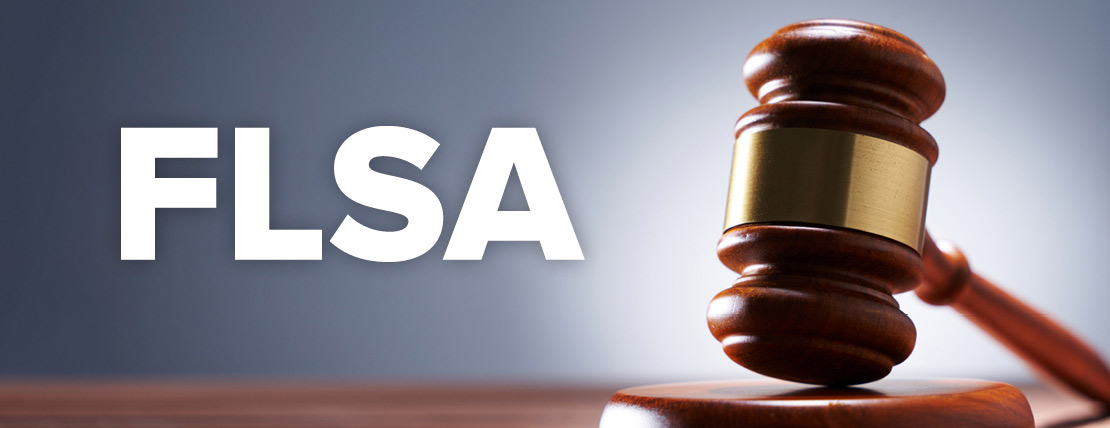For WorldatWork Members
- FLSA Implementation Toolkit, tool
- FLSA Research, research
- Are You Aware of These Free DOL Employment Law Resources? Workspan Daily Plus+ article
For Everyone
- Labor Department Appeals Decision that Halted OT Final Rule, Workspan Daily article
- Tips for Becoming a Wage and Hour Champion, Workspan Daily article
The U.S. Supreme Court ruled Wednesday, Jan. 15, that employers need not provide “clear and convincing evidence” to support their application of Fair Labor Standards Act (FLSA) provisions toward classifying employees as exempt for overtime and minimum wage requirements.
In a 9-0 decision, the Court reversed and remanded the outcome from the 4th U.S. Circuit Court of Appeals in the case E.M.D. Sales, Inc. v. Carrera. In doing so, the Court sided with the less stringent “preponderance of the evidence” standard upheld in the 5th, 6th, 7th, 8th, 9th, 10th and 11th Circuits.
In an 11-page opinion letter written by Associate Justice Brett Kavanaugh and concurred by Associate Justice Neil Gorsuch, the Court pointed to legal precedence in determining and applying evidence standards, stating: “When Congress enacted the FLSA in 1938, the preponderance-of-the-evidence standard was the default in American civil litigation, and it remains so today. In civil litigation, the Court has deviated from this default standard in three main circumstances. First, if a statute requires a heightened standard of proof, courts must apply it. Second, the Constitution can mandate a heightened standard of proof. Third, in certain rare situations involving coercive government action, such as taking away a person’s citizenship, a heightened standard may apply. But in most civil cases, including employment-discrimination cases under Title VII, the Court has consistently applied the preponderance standard.”
The document also pointed to the verbiage within the FLSA itself, stating, “The FLSA does not specify a standard of proof for exemptions, and when a civil statute is silent, courts typically apply the preponderance standard. This case does not involve constitutional rights that would require a heightened standard, nor does it involve the government taking unusual or coercive action against an individual. FLSA cases are similar to Title VII employment-discrimination cases, where the Court has applied the preponderance standard.”
How much of a difference is the two standards when applied to employment law? According to a post by law firm Fisher Phillips LLP, the “preponderance of the evidence” standard generally means there is a 51% chance the employer is correct in legal application, while the “clear and convincing evidence” standard generally translates to an 80% to 90% chance the employer is right.
How This All Started
The basis of the Carrera case was a 2017 lawsuit in which three sales representatives alleged their employer, a Washington, D.C.-based food products distributor, violated the FLSA by failing to pay them overtime wages when working more than 40 hours per week. The employer did not deny the sales representatives worked more than 40 hours per week but argued they were not entitled to overtime under the FLSA’s exemption for “outside sales employees.” The plaintiffs claimed their primary tasks included stocking shelves at grocery stores with the distributor’s products, removing damaged and expired items from the shelves, and issuing credits to the serviced stores for removed items.
In the case’s initial ruling, a district court sided with the plaintiffs, holding E.M.D. Sales had not established that initiating and closing sales was the employees’ core duty. On appeal, the employer argued that court mistakenly required it to establish employees’ primary duty by “clear and convincing evidence,” instead of by a “preponderance of the evidence.” The 4th Circuit affirmed the district court’s decision, basing it on existing precedent.
A blog post by law firm Foley & Lardner LLP wrote, “To demonstrate ‘clear and convincing’ evidence, an employer must show that there is a high probability or high likelihood of the exemption applying. While not as high of a bar as the ‘beyond a reasonable doubt’ standard used in criminal cases, the 4th Circuit’s approach involves a much higher burden than showing it is more likely than not (the ‘preponderance of the evidence’ standard).”
In September 2023, E.M.D. petitioned the Supreme Court to review the case. The Court granted the petition in June 2024.
In siding for the defendant on Jan. 15, the Court opined, “The employees’ policy-laden arguments for a heightened standard are unconvincing. Their argument that the FLSA protects the public interest in a fair economy does not necessitate a heightened standard. Other workplace protections, like those under Title VII, also serve important public interests but are subject to the preponderance standard. The employees argue that rights under the FLSA are nonwaivable and, therefore, different from other rights subject to the preponderance standard. But waivability of a right does not determine the standard of proof. … Whether the employees would fail to qualify as outside salesmen even under a preponderance standard is left for the Court of Appeals on remand.”
While not directly mentioning it in its opinion letter, the decision closely followed the Court’s 2018 ruling in Encino Motorcars LLC v. Navarro, in which it rejected the then-standing principle that FLSA exemptions should be “narrowly construed” and instead favored a more-relaxed standard that gives such exemptions a “fair reading.”
This latest ruling also comes on the heels of recent decisions in Loper Bright v. Raimondo and Relentless, Inc. v. Department of Commerce, in which the Court voided the so-called Chevron doctrine, a decades-old standard that required courts to give substantial deference to agencies and rulemaking bodies. The FLSA is enforced by the U.S. Department of Labor’s Wage and Hour Division.
Not surprisingly, business groups, including the National Association of Wholesaler-Distributors (NAW), lauded the Carrera decision.
In a post on the NAW website, chief government relations officer Brian Wild stated: “The Supreme Court’s ruling today was right on the law and policy when it comes to the standard of proof employers must meet when defending exemptions to the Fair Labor Standards Act. On the law, the Court correctly held that the higher clear and convincing standard is the exception, not the rule. Barring exceptional circumstances, the heightened standard should only apply when Congress or the Constitution requires it. As a matter of policy, the FLSA’s exemptions were carefully designed to protect employees, while ensuring employers are able to effectively and efficiently run their businesses and serve their customers.”
What Comes Next?
So, what does the Carrera ruling mean for employers?
Well, the Supreme Court definitely made it easier for some organizations to prove employees are exempt from overtime and minimum wage standards by setting a more conservative bar. If an employee (or employee group) does dispute an applied exemption and files a lawsuit, the employer need not meet a more stringent bar by providing “clear and convincing evidence.” The fallback is now basically that there was common sense or common application behind the exempt determination — the exemption was “reasonably applied” vs. “applied beyond a reasonable doubt.”
“The outcome of this Supreme Court case will have significant practical effect in that it will determine how much evidence an employer must provide to prove an exemption,” Foley & Lardner wrote. “Given the number of FLSA collective actions filed each year, this case has broad implications for employers in both deciding whether to classify an employee as exemption and in its legal strategy when defending FLSA misclassification claims.”
Fisher Phillips added, “Employers can breathe a sigh of relief knowing that SCOTUS has set a consistent standard for FLSA exemption cases, easing the burden on businesses. But wage-and-hour compliance should be top of mind since errors can result in significant penalties and heft litigation costs.”
As such, legal experts advise employers to consult with counsel in examining current exempt classifications or determining application of future ones.
Editor’s Note: Additional Content
For more information and resources related to this article, see the pages below, which offer quick access to all WorldatWork content on these topics:







